Which city is better to live Mumbai vs. Delhi
Mumbai and Delhi have unique characteristics, ultimately due to personal preference. Mumbai is known for its vibrant entertainment and nightlife, while Delhi is the political capital of India and is known for its rich history and culture. It’s recommended to research and consider factors such as cost of living, job opportunities, safety, and quality of life before making a decision.
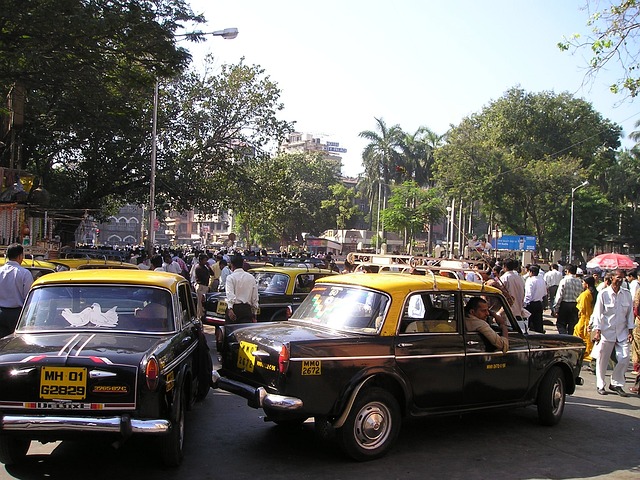
Five pros and cons of Living in Delhi
Pros:
- Rich Culture and History: Delhi is rich in history and culture, with numerous monuments and heritage sites attracting many tourists.
- Affordable Cost of Living: Compared to other major cities in India, Delhi offers a relatively affordable cost of living, particularly in areas such as Food, transportation, and housing.
- Employment Opportunities: Delhi is the national capital and home to numerous government institutions and multinational corporations, providing good job opportunities.
- Good Infrastructure: Delhi has a well-developed infrastructure, with an excellent public transport system, hospitals, and schools.
- Cosmopolitan: Delhi has a diverse population and a mixture of traditional and modern cultures.
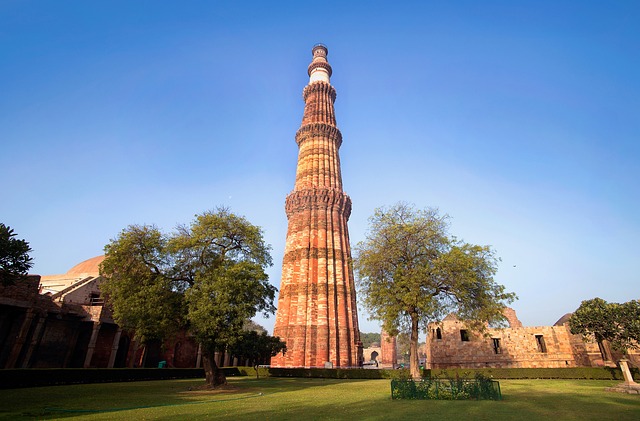
Cons:
- Overcrowded and Congested: Delhi is one of the most populated cities in India and can get congested and overcrowded, particularly during peak hours.
- Air Pollution: Delhi has a high level of air pollution, which can harm health and negatively impact the quality of life.
- Safety Concerns: Delhi has had a reputation for safety concerns, particularly for women, and crime rates can be high in some areas.
- Traffic Congestion: The city experiences heavy traffic congestion, making commuting time-consuming and stressful.
- High Levels of Poverty: Despite being the national capital, Delhi still has high poverty levels and socio-economic inequality, with slums and homelessness being shared in some areas.
Five pros and cons of Living in Mumbai
Pros:
- Vibrant Entertainment Scene: Mumbai is known for its vibrant entertainment scene, with numerous restaurants, bars, and nightlife options, making it a popular destination for young professionals.
- Job Opportunities: Mumbai is the financial capital of India and home to many multinational corporations, providing a wide range of job opportunities.
- Rich History and Culture: Mumbai has a rich history and cultural heritage, with landmarks such as the Gateway of India and the Elephanta Caves.
- Good Infrastructure: Mumbai has a well-developed infrastructure, with a sound transport system, hospitals, and schools.
- Coastal Location: Mumbai is located on the coast, providing access to beaches and a more laid-back lifestyle than other major cities in India.

Cons:
- High Cost of Living: Mumbai has a high cost of living, particularly in areas such as housing and Food, making it difficult for those on a tight budget.
- Crowded and Congested: Mumbai is one of the most populated cities in India and can get congested and crowded, particularly during peak hours.
- Limited Space: Due to its coastal location, Mumbai has limited space and a high population density, making it difficult to find spacious housing.
- Environmental Concerns: Mumbai faces environmental challenges such as air pollution, water pollution, and waste management, which can harm the quality of life.
- Traffic Congestion: Mumbai experiences heavy traffic congestion, making commuting time-consuming and stressful.
Cost of living | Mumbai vs. Delhi
The cost of living in Mumbai and Delhi can vary greatly, with Mumbai generally being more expensive. Here’s a breakdown of some everyday expenses:
Housing:
- In Mumbai, the average cost of a 1-bedroom apartment in the city center is around INR 50,000 to INR 70,000 ($700 to $1000) per month.
- In Delhi, the average cost of a 1-bedroom apartment in the city center is around INR 30,000 to INR 40,000 ($400 to $550) per month.
Food:
- In Mumbai, a meal in an inexpensive restaurant can cost around INR 300 ($4), while a mid-range restaurant can cost around INR 800 ($11).
- In Delhi, a meal in an inexpensive restaurant can cost around INR 150 ($2), while a meal in a mid-range restaurant can cost around INR 500 ($7).
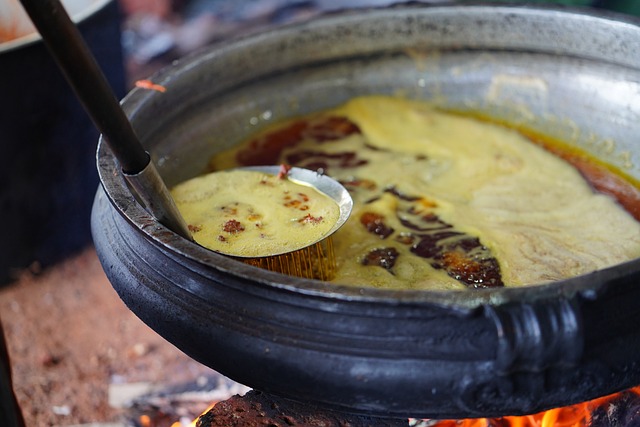
Transportation:
- In Mumbai, a monthly pass for public transport can cost around INR 1,500 ($20).
- In Delhi, a monthly pass for public transport can cost around INR 1,000 ($14).
Utilities:
- In Mumbai, the average utilities (electricity, water, and gas) for a 1-bedroom apartment can cost around INR 5,000 ($70) per month.
- In Delhi, the average utilities (electricity, water, and gas) for a 1-bedroom apartment can cost around INR 3,000 ($40) per month.
Entertainment:
- In Mumbai, the cost of entertainment can vary greatly, with a movie ticket costing around INR 300 ($4) and a night out at a bar or club costing around INR 2,000 ($28).
- In Delhi, the cost of entertainment can also vary, with a movie ticket costing around INR 250 ($3.50) and a night out at a bar or club costing around INR 1,500 ($21).
Healthcare:
- In Mumbai, the cost of healthcare can vary greatly, with a visit to a doctor costing around INR 1,000 ($14) and the cost of a hospital stay ranging from INR 10,000 ($140) to INR 50,000 ($700) or more.
- In Delhi, the cost of healthcare can also vary, with a visit to a doctor costing around INR 500 ($7) and the cost of a hospital stay ranging from INR 5,000 ($70) to INR 25,000 ($350) or more.
Other factors to consider when deciding between Mumbai and Delhi as places to live are safety, weather, culture, and quality of life.
Mumbai has a higher crime rate than Delhi, but it is also considered safer in natural disasters such as earthquakes and hurricanes. Delhi has a hot and dry climate, while Mumbai has a tropical climate with monsoon seasons. Mumbai is known for its vibrant entertainment scene and cosmopolitan culture, while Delhi has a rich cultural heritage and history.
When it comes to quality of life, both cities have their advantages and disadvantages. Mumbai offers job opportunities and a more laid-back coastal lifestyle, while Delhi offers lower living costs and a rich cultural heritage. It’s crucial to weigh all these factors and consider personal preferences when deciding which city is the best fit.
Ultimately, the choice between Mumbai and Delhi will depend on the individual’s specific needs, preferences, and budget.
These are general estimates and can vary greatly depending on the individual’s lifestyle and location within the city. Therefore, it’s essential to research and compares the costs of living in both cities before deciding.
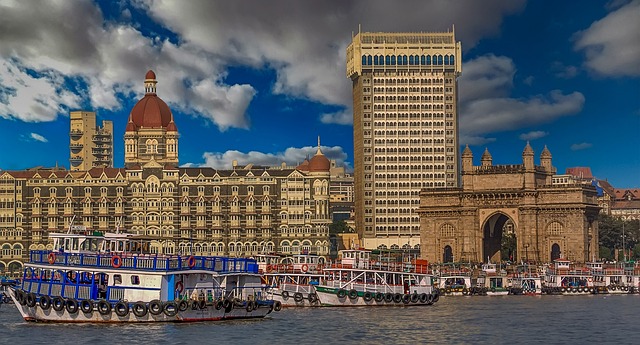
Area and Climate
Mumbai and Delhi are located in India and have vastly different climates and geographical areas.
Climate:
- Mumbai has a tropical climate with hot and humid summers and mild to cool winters. It also experiences monsoon rains from June to September.
- Delhi has a hot semi-arid climate with scorching summers and cool winters. Delhi also experiences dust storms in the summer months.
Area:
- Mumbai is a city on the west coast of India and covers an area of 437 square kilometers (169 square miles).
- Delhi is a National Capital Region (NCR) located in northern India and covers an area of 1,484 square kilometers (573 square miles).
Both cities are located in different parts of India and have different climates, which can impact the quality of life for residents. Therefore, it’s essential to consider the climate and geographical area when deciding between Mumbai and Delhi as a place to live.
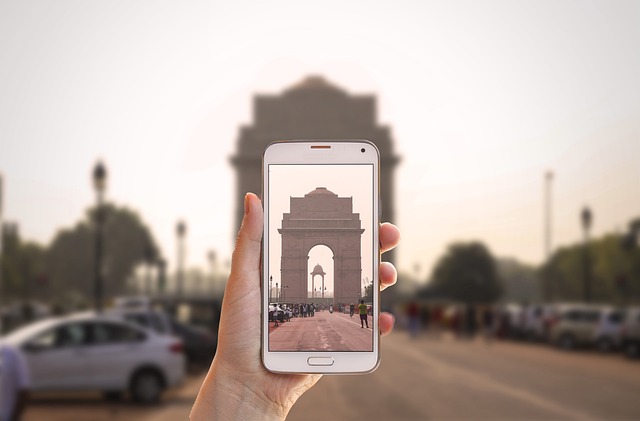
Population, Food, and languages
Population:
- Mumbai is one of the most populated cities in India, with a population of over 18 million people.
- Delhi is also one of the most populated cities in India, with a population of over 16 million people.
Food:
- Mumbai is known for its street food, which includes dishes like vada pav, pav bhaji, and bhel puri. It has various dining options, from local street food stalls to fine-dining restaurants.
- Delhi is also known for its street food, including chaat, paratha, and kebabs. It also has a wide range of dining options, including street food stalls, local restaurants, and international cuisine.
Languages:
- The official language of Mumbai is Marathi, but most of the population also speaks Hindi and English.
- The official language of Delhi is Hindi, but most of the population also speaks English.
Both Mumbai and Delhi have diverse populations, rich food cultures, and a mix of languages spoken. These factors contribute to the unique cultural experiences offered by each city, and it’s essential to consider them when deciding which city is the best fit.
History, Culture Tradition, and People
History:
- Mumbai has a rich history dating back to the 17th century when it was a center of trade and commerce under the Portuguese. The British later ruled it, and today it is one of India’s most important financial and entertainment hubs.
- Delhi has a long and rich history, serving as the capital of several dynasties and empires, including the Mughal Empire. Today, Delhi is the capital of India and a center of politics, culture, and history.
Culture and Tradition:
- Mumbai is known for its cosmopolitan culture and diverse population, with influences from various regions and religions. It is also a significant center of the Indian film industry, commonly referred to as Bollywood.
- Delhi is known for its rich cultural heritage and mix of traditional and modern influences. It is home to several monuments and sites of historical importance, including the Red Fort, Qutub Minar, and Humayun’s Tomb.
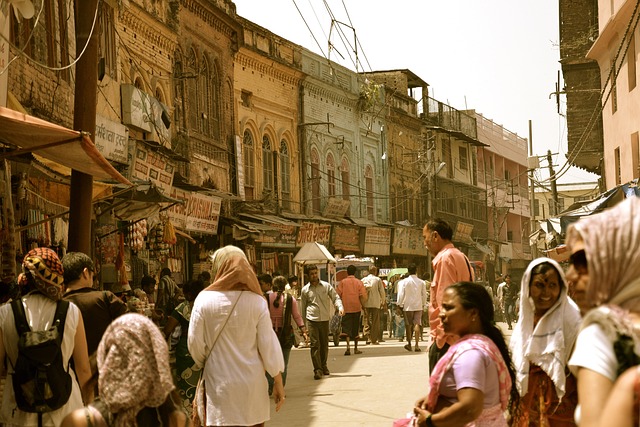
People:
- Mumbai is known for its friendly and welcoming people, who are known for their entrepreneurial spirit and hard-working nature.
- Delhi is known for its friendly and hospitable people, who are proud of their cultural heritage and history.
Mumbai and Delhi have unique cultural experiences, a rich history, diverse populations, and a mix of traditional and modern influences. These factors can significantly impact the quality of life for residents and should be considered when deciding between the two cities.
Per capita Income, Poverty index, Job opportunities, economic growth
Per capita income:
- Mumbai has a higher per capita income than the rest of India due to its strong economic base and high levels of industry and commerce.
- Delhi also has a relatively high per capita income compared to the rest of India, driven by its strong economic growth and diverse industries.
Poverty index:
- Mumbai has a lower poverty index than the rest of India, with a high standard of living for its residents.
- Delhi also has a lower poverty index than the rest of India, although poverty is still a significant issue in some areas of the city.
Job Opportunities:
- Mumbai is one of India’s most important financial and entertainment hubs and offers a wide range of job opportunities in industries such as finance, technology, media, and entertainment.
- Delhi is also a major center of economic activity in India, with job opportunities in finance, technology, manufacturing, and government industries.
Economic growth:
- Mumbai has a strong and growing economy driven by finance, technology, media, and entertainment industries.
- Delhi’s economy is also growing, driven by various industries, including finance, technology, manufacturing, and government.
Mumbai and Delhi have strong and growing economies, with high per capita incomes and relatively low poverty indexes. They also offer a range of job opportunities across multiple industries, making them attractive destinations for those looking for employment. However, poverty remains a significant issue in both cities and should be considered when deciding between them as a place to live.
Tourism and places to visit
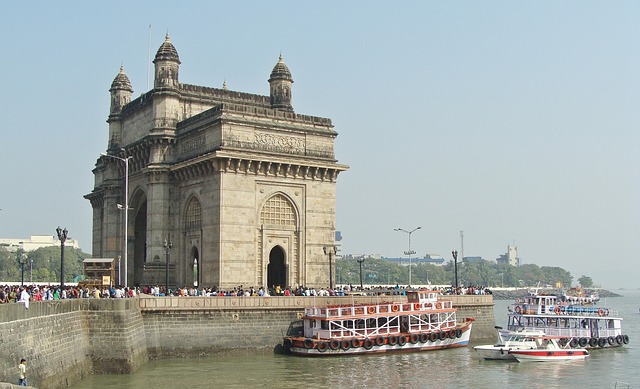
Tourism:
- Mumbai is a major tourist destination, attracting millions of visitors each year. Some of its top tourist attractions include the Gateway of India, Marine Drive, and the Elephanta Caves.
- Delhi is also a popular tourist destination, with millions of visitors each year. Some of its top tourist attractions include the Red Fort, Qutub Minar, and the Lotus Temple.
Places to visit:
- Mumbai offers a range of tourist destinations, including historical monuments, museums, and natural attractions. Some popular places in Mumbai are the Chhatrapati Shivaji Terminus, the Elephanta Caves, and the Juhu Beach.
- Delhi also offers a range of tourist destinations, including historical monuments, museums, and natural attractions. Some popular places to visit in Delhi include the Red Fort, the Lotus Temple, and the India Gate.
Mumbai and Delhi offer a range of tourist destinations and attractions for visitors to explore, making them both popular destinations. However, the specific places to visit may vary depending on personal interests and preferences.
Which city is better to live Mumbai vs. Delhi
Mumbai and Delhi have unique characteristics, ultimately due to personal preference. Mumbai is known for its vibrant entertainment and nightlife, while Delhi is the political capital of India and is known for its rich history and culture. It’s recommended to research and consider factors such as cost of living, job opportunities, safety, and quality of life before making a decision.

Five pros and cons of Living in Delhi
Pros:
- Rich Culture and History: Delhi is rich in history and culture, with numerous monuments and heritage sites attracting many tourists.
- Affordable Cost of Living: Compared to other major cities in India, Delhi offers a relatively affordable cost of living, particularly in areas such as Food, transportation, and housing.
- Employment Opportunities: Delhi is the national capital and home to numerous government institutions and multinational corporations, providing good job opportunities.
- Good Infrastructure: Delhi has a well-developed infrastructure, with an excellent public transport system, hospitals, and schools.
- Cosmopolitan: Delhi has a diverse population and a mixture of traditional and modern cultures.

Cons:
- Overcrowded and Congested: Delhi is one of the most populated cities in India and can get congested and overcrowded, particularly during peak hours.
- Air Pollution: Delhi has a high level of air pollution, which can harm health and negatively impact the quality of life.
- Safety Concerns: Delhi has had a reputation for safety concerns, particularly for women, and crime rates can be high in some areas.
- Traffic Congestion: The city experiences heavy traffic congestion, making commuting time-consuming and stressful.
- High Levels of Poverty: Despite being the national capital, Delhi still has high poverty levels and socio-economic inequality, with slums and homelessness being shared in some areas.
Five pros and cons of Living in Mumbai
Pros:
- Vibrant Entertainment Scene: Mumbai is known for its vibrant entertainment scene, with numerous restaurants, bars, and nightlife options, making it a popular destination for young professionals.
- Job Opportunities: Mumbai is the financial capital of India and home to many multinational corporations, providing a wide range of job opportunities.
- Rich History and Culture: Mumbai has a rich history and cultural heritage, with landmarks such as the Gateway of India and the Elephanta Caves.
- Good Infrastructure: Mumbai has a well-developed infrastructure, with a sound transport system, hospitals, and schools.
- Coastal Location: Mumbai is located on the coast, providing access to beaches and a more laid-back lifestyle than other major cities in India.

Cons:
- High Cost of Living: Mumbai has a high cost of living, particularly in areas such as housing and Food, making it difficult for those on a tight budget.
- Crowded and Congested: Mumbai is one of the most populated cities in India and can get congested and crowded, particularly during peak hours.
- Limited Space: Due to its coastal location, Mumbai has limited space and a high population density, making it difficult to find spacious housing.
- Environmental Concerns: Mumbai faces environmental challenges such as air pollution, water pollution, and waste management, which can harm the quality of life.
- Traffic Congestion: Mumbai experiences heavy traffic congestion, making commuting time-consuming and stressful.
Cost of living | Mumbai vs. Delhi
The cost of living in Mumbai and Delhi can vary greatly, with Mumbai generally being more expensive. Here’s a breakdown of some everyday expenses:
Housing:
- In Mumbai, the average cost of a 1-bedroom apartment in the city center is around INR 50,000 to INR 70,000 ($700 to $1000) per month.
- In Delhi, the average cost of a 1-bedroom apartment in the city center is around INR 30,000 to INR 40,000 ($400 to $550) per month.
Food:
- In Mumbai, a meal in an inexpensive restaurant can cost around INR 300 ($4), while a mid-range restaurant can cost around INR 800 ($11).
- In Delhi, a meal in an inexpensive restaurant can cost around INR 150 ($2), while a meal in a mid-range restaurant can cost around INR 500 ($7).

Transportation:
- In Mumbai, a monthly pass for public transport can cost around INR 1,500 ($20).
- In Delhi, a monthly pass for public transport can cost around INR 1,000 ($14).
Utilities:
- In Mumbai, the average utilities (electricity, water, and gas) for a 1-bedroom apartment can cost around INR 5,000 ($70) per month.
- In Delhi, the average utilities (electricity, water, and gas) for a 1-bedroom apartment can cost around INR 3,000 ($40) per month.
Entertainment:
- In Mumbai, the cost of entertainment can vary greatly, with a movie ticket costing around INR 300 ($4) and a night out at a bar or club costing around INR 2,000 ($28).
- In Delhi, the cost of entertainment can also vary, with a movie ticket costing around INR 250 ($3.50) and a night out at a bar or club costing around INR 1,500 ($21).
Healthcare:
- In Mumbai, the cost of healthcare can vary greatly, with a visit to a doctor costing around INR 1,000 ($14) and the cost of a hospital stay ranging from INR 10,000 ($140) to INR 50,000 ($700) or more.
- In Delhi, the cost of healthcare can also vary, with a visit to a doctor costing around INR 500 ($7) and the cost of a hospital stay ranging from INR 5,000 ($70) to INR 25,000 ($350) or more.
Other factors to consider when deciding between Mumbai and Delhi as places to live are safety, weather, culture, and quality of life.
Mumbai has a higher crime rate than Delhi, but it is also considered safer in natural disasters such as earthquakes and hurricanes. Delhi has a hot and dry climate, while Mumbai has a tropical climate with monsoon seasons. Mumbai is known for its vibrant entertainment scene and cosmopolitan culture, while Delhi has a rich cultural heritage and history.
When it comes to quality of life, both cities have their advantages and disadvantages. Mumbai offers job opportunities and a more laid-back coastal lifestyle, while Delhi offers lower living costs and a rich cultural heritage. It’s crucial to weigh all these factors and consider personal preferences when deciding which city is the best fit.
Ultimately, the choice between Mumbai and Delhi will depend on the individual’s specific needs, preferences, and budget.
These are general estimates and can vary greatly depending on the individual’s lifestyle and location within the city. Therefore, it’s essential to research and compares the costs of living in both cities before deciding.

Area and Climate
Mumbai and Delhi are located in India and have vastly different climates and geographical areas.
Climate:
- Mumbai has a tropical climate with hot and humid summers and mild to cool winters. It also experiences monsoon rains from June to September.
- Delhi has a hot semi-arid climate with scorching summers and cool winters. Delhi also experiences dust storms in the summer months.
Area:
- Mumbai is a city on the west coast of India and covers an area of 437 square kilometers (169 square miles).
- Delhi is a National Capital Region (NCR) located in northern India and covers an area of 1,484 square kilometers (573 square miles).
Both cities are located in different parts of India and have different climates, which can impact the quality of life for residents. Therefore, it’s essential to consider the climate and geographical area when deciding between Mumbai and Delhi as a place to live.

Population, Food, and languages
Population:
- Mumbai is one of the most populated cities in India, with a population of over 18 million people.
- Delhi is also one of the most populated cities in India, with a population of over 16 million people.
Food:
- Mumbai is known for its street food, which includes dishes like vada pav, pav bhaji, and bhel puri. It has various dining options, from local street food stalls to fine-dining restaurants.
- Delhi is also known for its street food, including chaat, paratha, and kebabs. It also has a wide range of dining options, including street food stalls, local restaurants, and international cuisine.
Languages:
- The official language of Mumbai is Marathi, but most of the population also speaks Hindi and English.
- The official language of Delhi is Hindi, but most of the population also speaks English.
Both Mumbai and Delhi have diverse populations, rich food cultures, and a mix of languages spoken. These factors contribute to the unique cultural experiences offered by each city, and it’s essential to consider them when deciding which city is the best fit.
History, Culture Tradition, and People
History:
- Mumbai has a rich history dating back to the 17th century when it was a center of trade and commerce under the Portuguese. The British later ruled it, and today it is one of India’s most important financial and entertainment hubs.
- Delhi has a long and rich history, serving as the capital of several dynasties and empires, including the Mughal Empire. Today, Delhi is the capital of India and a center of politics, culture, and history.
Culture and Tradition:
- Mumbai is known for its cosmopolitan culture and diverse population, with influences from various regions and religions. It is also a significant center of the Indian film industry, commonly referred to as Bollywood.
- Delhi is known for its rich cultural heritage and mix of traditional and modern influences. It is home to several monuments and sites of historical importance, including the Red Fort, Qutub Minar, and Humayun’s Tomb.

People:
- Mumbai is known for its friendly and welcoming people, who are known for their entrepreneurial spirit and hard-working nature.
- Delhi is known for its friendly and hospitable people, who are proud of their cultural heritage and history.
Mumbai and Delhi have unique cultural experiences, a rich history, diverse populations, and a mix of traditional and modern influences. These factors can significantly impact the quality of life for residents and should be considered when deciding between the two cities.
Per capita Income, Poverty index, Job opportunities, economic growth
Per capita income:
- Mumbai has a higher per capita income than the rest of India due to its strong economic base and high levels of industry and commerce.
- Delhi also has a relatively high per capita income compared to the rest of India, driven by its strong economic growth and diverse industries.
Poverty index:
- Mumbai has a lower poverty index than the rest of India, with a high standard of living for its residents.
- Delhi also has a lower poverty index than the rest of India, although poverty is still a significant issue in some areas of the city.
Job Opportunities:
- Mumbai is one of India’s most important financial and entertainment hubs and offers a wide range of job opportunities in industries such as finance, technology, media, and entertainment.
- Delhi is also a major center of economic activity in India, with job opportunities in finance, technology, manufacturing, and government industries.
Economic growth:
- Mumbai has a strong and growing economy driven by finance, technology, media, and entertainment industries.
- Delhi’s economy is also growing, driven by various industries, including finance, technology, manufacturing, and government.
Mumbai and Delhi have strong and growing economies, with high per capita incomes and relatively low poverty indexes. They also offer a range of job opportunities across multiple industries, making them attractive destinations for those looking for employment. However, poverty remains a significant issue in both cities and should be considered when deciding between them as a place to live.
Tourism and places to visit

Tourism:
- Mumbai is a major tourist destination, attracting millions of visitors each year. Some of its top tourist attractions include the Gateway of India, Marine Drive, and the Elephanta Caves.
- Delhi is also a popular tourist destination, with millions of visitors each year. Some of its top tourist attractions include the Red Fort, Qutub Minar, and the Lotus Temple.
Places to visit:
- Mumbai offers a range of tourist destinations, including historical monuments, museums, and natural attractions. Some popular places in Mumbai are the Chhatrapati Shivaji Terminus, the Elephanta Caves, and the Juhu Beach.
- Delhi also offers a range of tourist destinations, including historical monuments, museums, and natural attractions. Some popular places to visit in Delhi include the Red Fort, the Lotus Temple, and the India Gate.
Mumbai and Delhi offer a range of tourist destinations and attractions for visitors to explore, making them both popular destinations. However, the specific places to visit may vary depending on personal interests and preferences.













